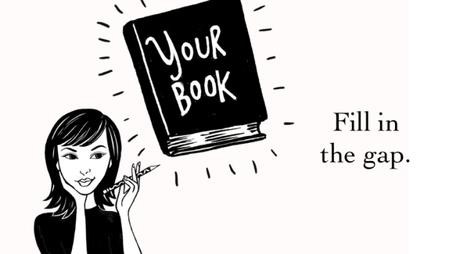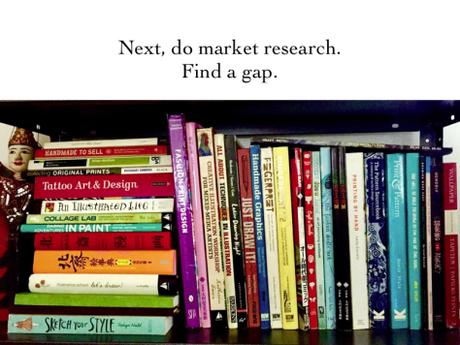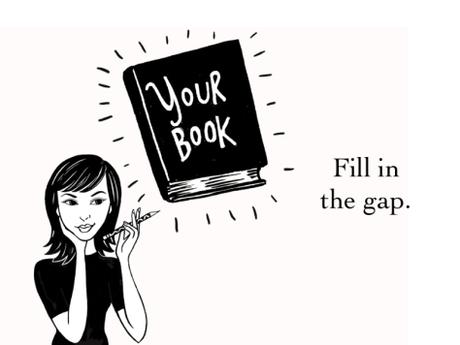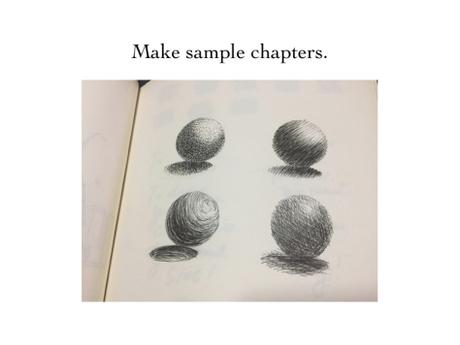
Yesterday, I was part of a panel discussion entitled "How to Publish a How-To Book: A Guide for Artist-Authors" at the Philippine Readers and Writers Festival, an annual event organized by NBS in cooperation with the local publishing industry. Was honored to share the panel with the young and talented self-taught fashion illustrator Pete Rich, author of "My Fashion Sketchpad" (Anvil Take Five, 2018).
Here were my tips:
Forget about quitting your job...for now. Take your head out of the clouds for the moment. Your dream to publish should not make you neglect or abandon your well-paying job, but instead make you fight to keep it. In the beginning, even if you sign up with a publisher, you will need to put out some money to make your dream book a reality. Authors earn from royalty fees and not salaries. Royalties are computed as percentages taken off from book sales. Royalty rates range, for most publishers, anywhere from 5 to 20%, and the rate is contingent on several factors, like, the roles you played in the book-making: Were you the writer as well as the illustrator? If you just provided the text, then you will have to split up the royalty with the illustrator. Are you a newbie or an established author? Needless to say, a royalty rate lower than 5% is exploitative.
To illustrate: to even make your first million, you'll first have to sell 5 million pesos worth of books. Say your book costs P500. You will have to sell 10,000 copies to make 5 million pesos sales. And this will only be true if your royalty rate is 20%. A 20% rate is rarely offered to newbie authors. It is a rate reserved for established, tried-and-tested best-selling authors. Authors may also earn by selling their manuscript outright for a one-time payment. If the book turns out to be a best-seller, though, the author may not have claims on future revenues the book and its subsequent reprints will generate.
So, hold on to that day job!
First, do some soul-searching. Set aside time to do a Strengths-Weaknesses-Opportunities-Threats (SWOT) analysis of yourself. Be very honest with yourself. What are you an expert at? Whose view is this? Will other people acknowledge your expertise on the topic? Will they agree with you? Will they be willing to write a testimonial book blurb for you if you ask them?
Whatever your topic choice will be,...
You should be passionate about it.
You have been doing it for a considerable time.
You do it very well, much better than everybody else.
You should be able to break down the topic into easy-to-follow lessons.

Look at your bookshelf. Your book collection should give you a good idea of what kind of books your target audience also collects. Why? Because we tend to want people who have the same tastes like us as our audience. Noting this, what kind of book would you like to publish? Have there been books published on your chosen topic? Were you satisfied with them? If it were up to you, how will you improve them? What will you change? If you were happy with them, can you be able to tell what works in the books you like? Note the scope of topic, manner of presentation, design of the book, number of pages, size of book, etc. Go to a bookstore and see what books are written about your topic. Is there a book similar to the book you had in mind? Are there too many books similar to the one you want to write? Will your book have a fighting chance against these books, in the mind of your target market? Take note also of the different publishers and the kinds of how-to books they publish. Which publishing company do you think is likely to carry your book?
Find a gap.The gap you identify may be in the form of a book. Or the manner your chosen topic has so far been tackled in books currently in the market. Do you have anything new or revolutionary to offer? Do you think your idea is potentially marketable?

Having done your homework, now you can allow yourself to dream. What mood or tone will your book have-authoritative? friendly? humorous? inspiring?
Visualize your book. What do you see when you flip the pages in your mind?
Now, get to work, and write it down!
It's like writing your thesis all over again. Decide on the scope and limitations of your topic. Narrow down your topic to a manageable size that can be covered in one book.
Draft a course outline. This is a good exercise for determining how the book will flow through several pages or chapters. It will help you define and refine the scope and limits of your topic, as well as identify potential snags that can make the writing of your book problematic or altogether impossible.

To further convince yourself that your book idea is viable, try writing and illustrating some chapters. At this stage, you have the opportunity to test the mood and tone of your book, and to refine or revise the text or visuals accordingly. By taking time to do this, you make your work easier, by making your book idea less abstract and more concrete in your mind.
Make your pitch. Publishers' submission guidelines are available online. Look up your target publisher and check out their site. Or simply type the keywords "submissions + publisher name". Understand that every day, your target publisher may receive hundreds of unsolicited emails or letters from people like you who want to be published. Your submission will most likely end up in the slush pile without any guarantee of being considered, much less, read. This is the risk you will have to take. You will have to figure out ways on making your submission stand out.
When putting together your proposal, the publisher will have its basic requirements, and these include the table of contents and sample chapters. Just give a teaser for your book that will pique their interest. There are too many horror stories of publishers plagiarizing submissions. To protect your book idea from being stolen, submit only to reputable, established publishers, and even then, it will be good to exercise extra caution: do not include the most important chapters, or vital research documents, and with regard artworks, do not submit high resolution original artworks. Reserve these for when you get a call for a meeting to discuss the book project. Say that you will be happy to show more of your book idea if your can have an appointment with them. And never turn over your manuscript or artworks to them unless you sign a contract. Make sure you get a notarized copy of this contract.
Publishers do not like it when you make simultaneous submissions. But in case you cannot avoid doing this because of the timeliness of the topic, mention this in the cover letter accompanying your submission.
Self-publish. And, in case your book idea never gets published by mainstream press, it is not the end of the world. There is always the option to self-publish, if you really believe in your book.
Consider making your content avalilable online. You can feature sample pages on your personal website or sites like Pinterest, and offer the complete content as PDF or e-book for a subscription fee. There are several excellent eBook self-publishing platforms online: CreateSpace, Kindle Direct Publishing, Lulu, Google Play, etc. There are also options for desktop publishing, too. Central Books publishes books on demand. They offer design and layout services apart from printing and securing ISBN for your book. You can promote your book online and send to buyers through couriers. Consider non-traditonal venues for selling like the Komikon and Komiket events, as well as coffee shops, galleries, art and novelty shops.
Be patient, and creative. There are several things you can do while waiting for a big publisher to pick up your book idea, and most of them as fulfilling as being actually published. Make good use of social media like Instagram, Pinterest, Facebook Pages, and Twitter to promote your work. Publishers like play it safe and check out pages with huge followings, and they like to buy the rights to content that is trending. Your social media followers are a captive audience for your book, and this opportunity is not lost on the publisher.
Good luck on your book!
